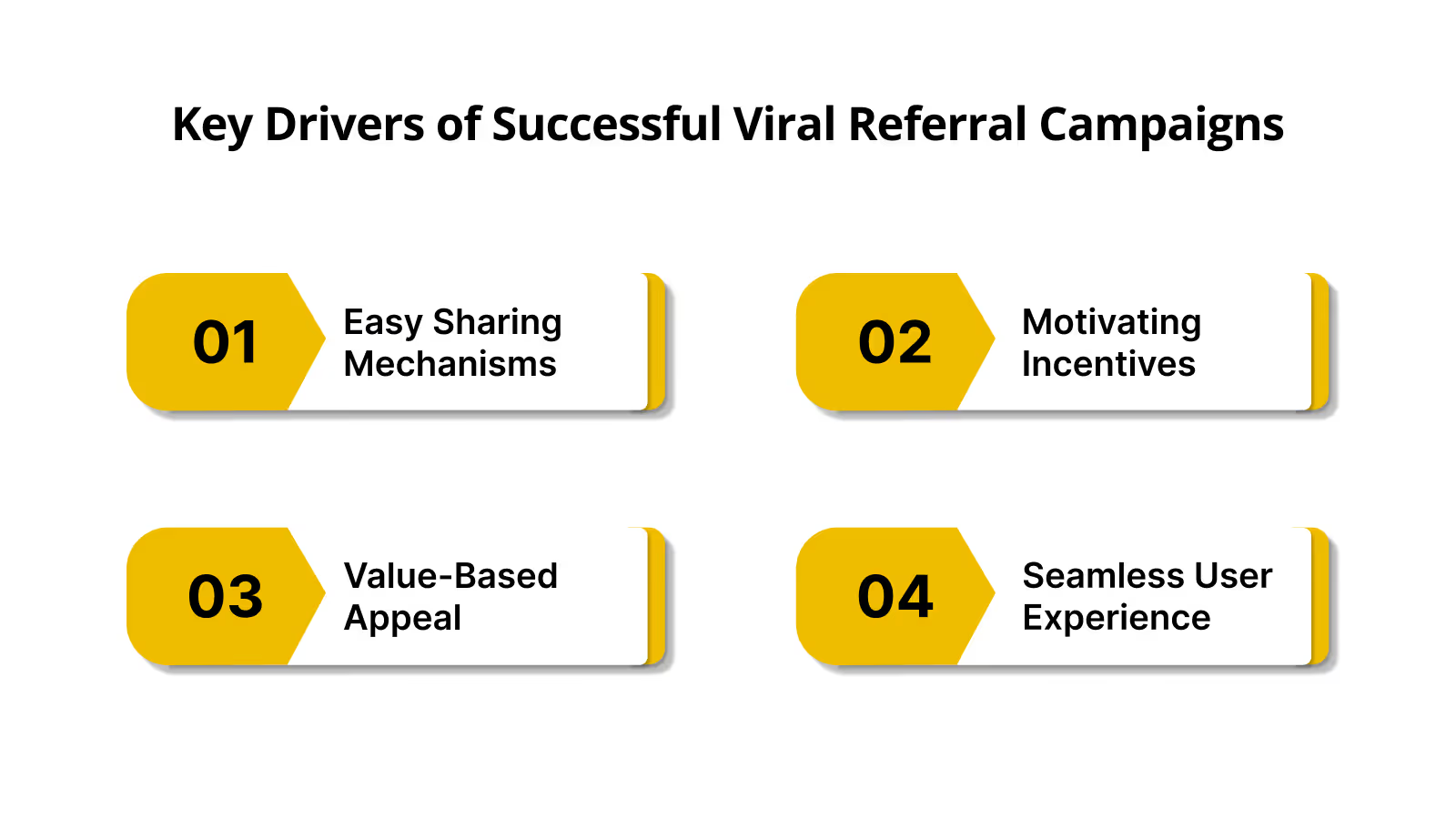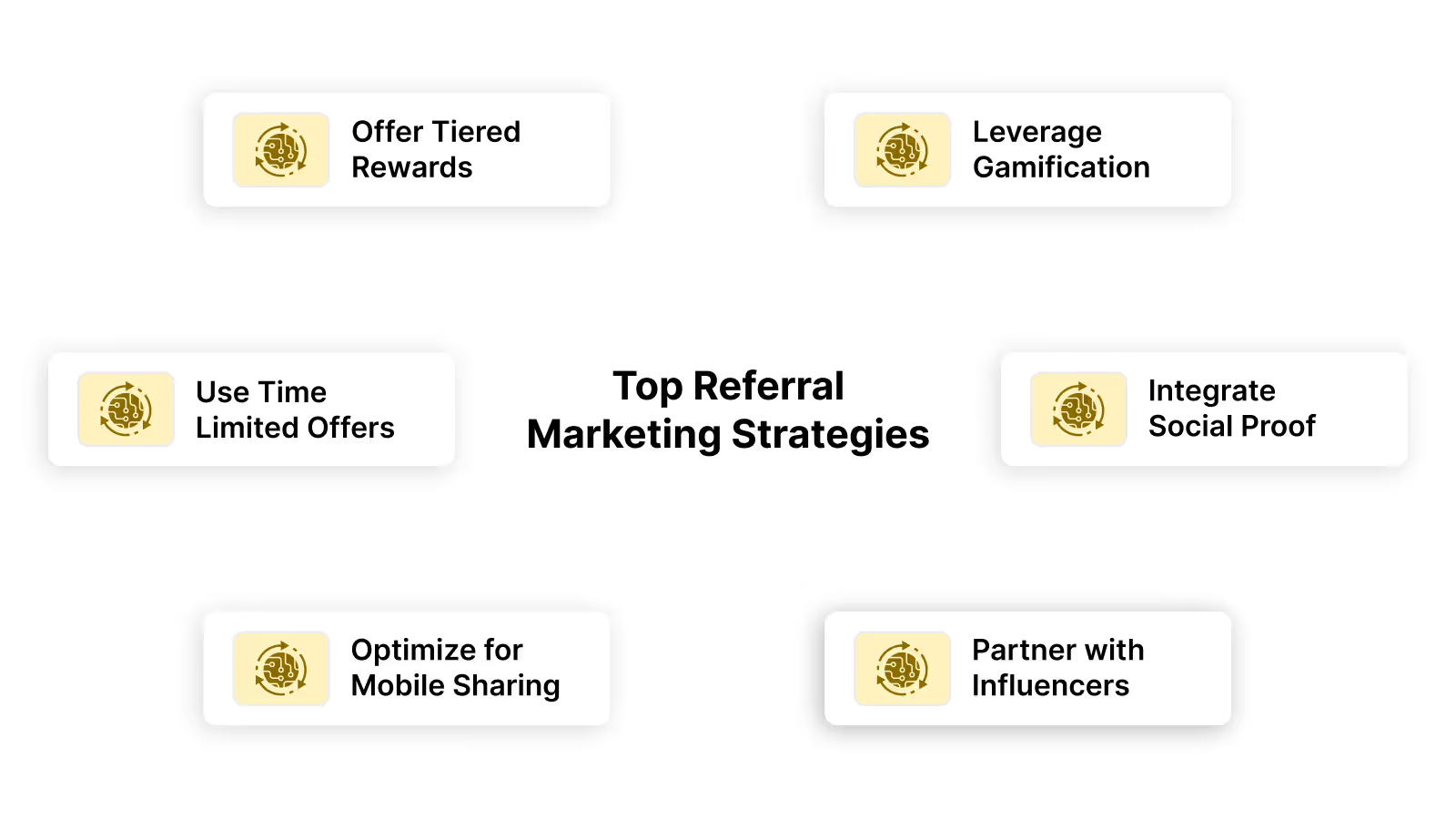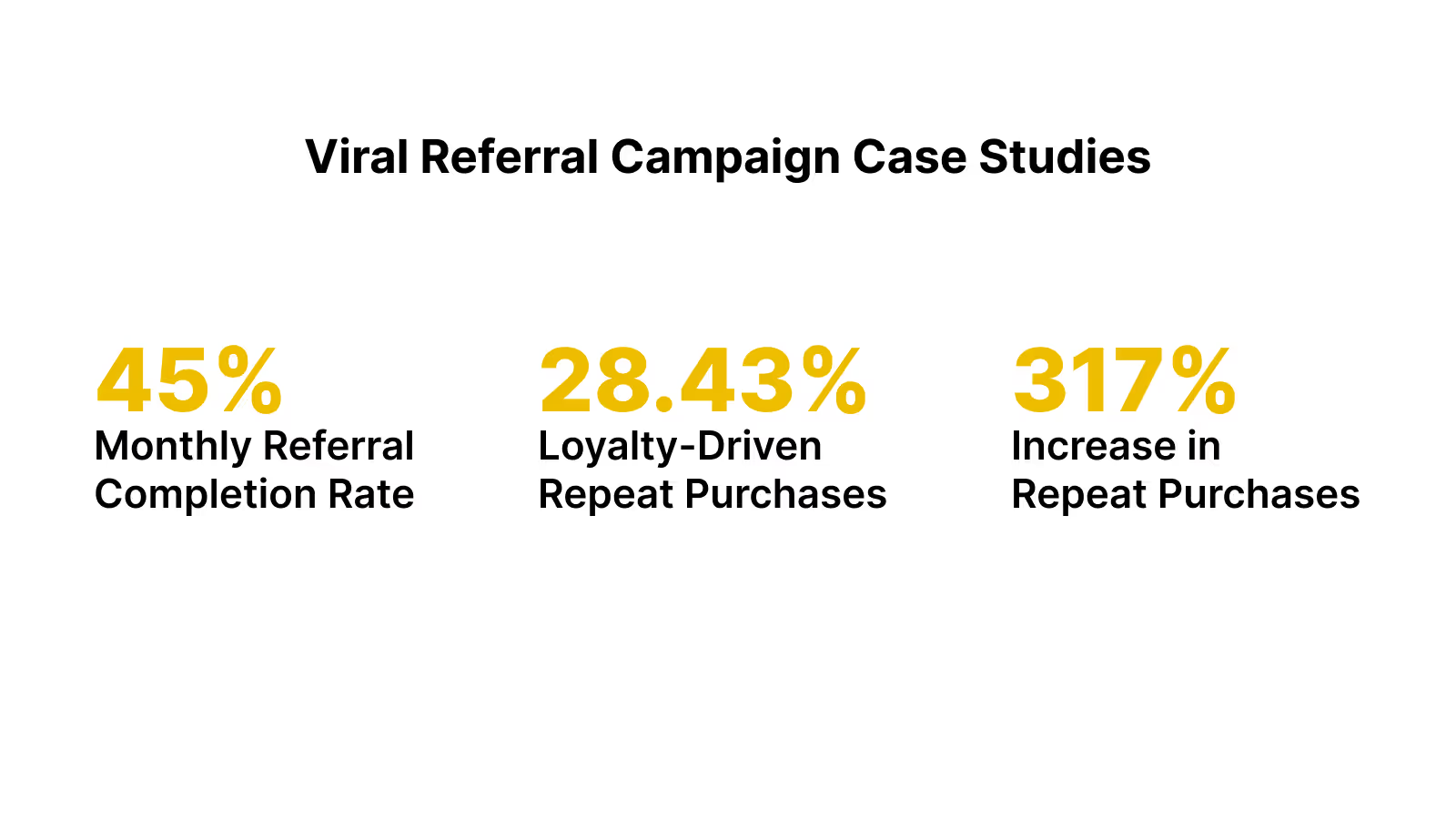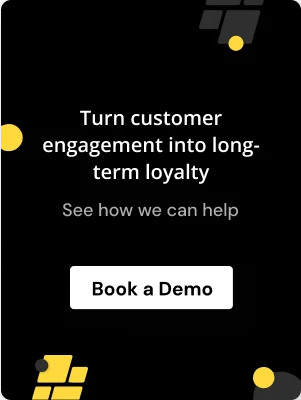.avif)
.avif)
Customer acquisition is becoming more costly every year. The Customer referral marketing research: A consumer perspective report reveals that 86 per cent of consumers find recommendations and reviews important in their purchase decisions. In comparison, only 2 per cent consider traditional ads important in their purchase decisions.
This imbalance has pushed many brands to rethink their growth strategies. Referral programs, when designed intentionally, offer a way to bridge that gap. They turn satisfied customers into advocates who bring in new, high-quality buyers at a fraction of what paid acquisition costs.
In this article, we’ll break down how viral referral marketing works, why it’s becoming one of the most sustainable growth levers for direct-to-consumer (DTC) brands, and the strategies you can apply in 2025 to make your referral campaigns more impactful.
What Is Viral Referral Marketing?
Viral referral marketing takes traditional word-of-mouth and gives it structure. Instead of relying on organic sharing alone, it creates a system where existing customers are encouraged to refer friends or family, usually in exchange for rewards, exclusive perks, or recognition.
What makes it “viral” isn’t just the act of sharing; it’s the loop it creates. Every new customer brought in through a referral has the same opportunity to share further, creating a self-sustaining cycle of growth.
For e-commerce teams, referrals serve more than one purpose. They don’t just bring in new customers; they help build a community around your brand, strengthen loyalty among existing shoppers, and reduce overreliance on costly, unpredictable paid acquisition channels. With Nector, referrals become easy to track, simple to share, and built to scale, helping you lower CAC, acquire new customers at a fraction of your ad spend, and delight shoppers with dual-sided rewards like coupons, coins, or discounts.
Read: How to Design a Referral Program That Drives Repeat Purchases
Key Drivers of Successful Viral Referral Campaigns

Many referral programs fall short because they rely on a simple discount code and little else. The most effective programs take a more thoughtful approach, focusing on factors that make sharing easy, rewarding, and meaningful:
1. Easy Sharing Mechanisms
Every extra step lowers the likelihood of a referral. Programs perform better when they reduce friction with single-click sharing, pre-filled social messages, QR codes, or built-in app integrations. These small design choices make it simple for customers to share without having to overthink the process.
2. Motivating Incentives
A flat discount often isn’t enough to spark sustained participation. Tiered rewards, such as offering higher-value perks for multiple referrals or exclusive benefits like early product access, encourage customers to keep sharing. When customers can see tangible progress toward a bigger reward, they’re more likely to stay engaged.
3. Emotional or Value-Based Appeal
People are more inclined to refer when it reflects their values or identity. Campaigns tied to shared goals like supporting sustainability, fostering community, or gaining access to limited editions resonate more deeply and drive authentic advocacy.
4. Seamless User Experience
Even the strongest incentives fall flat if the experience feels clunky. Customers need visibility into their progress: how many referrals they’ve completed, what rewards they’ve earned, and what’s next. Platforms like Nector address this by offering real-time dashboards where customers can track their activity and rewards in one place. This transparency makes the program feel more engaging and worth participating in.
Referral campaigns work best when they combine simplicity, meaningful rewards, and a user-friendly experience. By focusing on these core drivers, brands can turn occasional sharers into consistent advocates who actively contribute to growth.
Top Viral Referral Marketing Strategies for 2025

Customers today are more deliberate about what they share, which means referral programs need to deliver genuine value, not just quick discounts to drive participation. These six strategies reflect how leading e-commerce brands are building referral programs that keep customers engaged and generate measurable growth:
1. Offer Tiered Rewards for Increasing Referrals
Flat rewards are often effective for a first referral but rarely motivate customers beyond that point. A tiered reward model introduces progression. For example, one referral earns a small discount, three referrals unlock a free product, and five referrals grant access to exclusive perks or early releases. This structure taps into customers’ natural motivation to reach the next milestone. It also creates a sense of exclusivity, making customers feel like they are part of an inner circle, the more they engage.
2. Gamify Your Referral Program
Gamification adds an element of play and motivation to otherwise transactional interactions. Features like leaderboards that rank top referrers, achievement badges for milestones, or seasonal competitions encourage repeat participation. For instance, offering bonus rewards for those who stay in the top three referrers over a specific period creates ongoing excitement. This approach transforms referrals into an activity customers want to engage with rather than a favor they’re doing for the brand.
3. Use Time-Limited or Exclusive Offers
Adding urgency can significantly increase referral participation. Time‑limited campaigns, such as “Refer two friends this week for double points,” push customers to act quickly. Pairing these with exclusive offers like early access to product launches or limited‑edition merchandise enhances the perceived value of participating. This combination of urgency and exclusivity is especially effective for driving bursts of engagement during slower sales cycles or before major launches.
4. Integrate Social Proof and User-Generated Content
Trust is a critical driver of referrals. By embedding authentic customer voice reviews, testimonials, or photos into referral pages, brands make these programs feel like an invitation to join a trusted community. This approach reduces skepticism and builds credibility for new customers while giving existing ones pride in being part of a brand’s story. For example, a fashion retailer might showcase customer‑styled photos next to referral prompts, creating a sense of belonging that fuels sharing.
5. Optimize for Mobile Sharing and Quick Actions
Most referrals happen on mobile, so streamlined, mobile‑first experiences are non‑negotiable. Single‑tap sharing options, auto‑generated referral messages, and quick reward notifications keep the process effortless. When customers can share links, track their progress, and redeem rewards without switching between multiple screens, participation rates improve significantly. This isn’t just about convenience — it’s about meeting customers where they are.
6. Partner with Influencers and Brand Advocates
Referral programs can expand their reach by tapping into micro‑influencers or highly engaged brand advocates. These collaborations merge personal recommendations with broader exposure, keeping referrals authentic while reaching new audiences. Tracking performance across both organic referrals and influencer‑driven campaigns helps ensure these partnerships deliver measurable results rather than vanity metrics.
When applied together, these strategies create referral programs that are credible, rewarding, and easy to engage with. For teams managing this at scale, platforms like Nector simplify execution by combining referral workflows, loyalty rewards, and real‑time tracking in a single dashboard, ensuring that programs remain structured and measurable without adding operational burden.
Viral Referral Campaign Case Studies

Referral programs work best when they are designed around customer behavior and provide clear, tangible value. The following examples showcase how three brands in different segments used Nector’s loyalty and referral capabilities to not only incentivize actions but also build long-term engagement. These case studies highlight how aligning rewards with customer expectations can transform referrals from one-off transactions into a reliable growth engine.
1. 45% Referral Completion Rate With Loyalty + Community
A leading baby care marketplace in India used a powerful combination of loyalty points, VIP tiers, and referrals to achieve a 45% monthly referral completion rate. The program combined loyalty points, VIP tiers, and structured referrals, making it easy for parents to earn rewards for purchases, reviews, and referrals while tracking their progress in real time.
- 9.31% loyalty-driven revenue
- 32.3% overall coin redemption rate
By embedding these incentives into the customer journey, the brand created an ecosystem where engaged parents became consistent advocates, expanding its customer base without relying solely on paid acquisition.
2. Driving 28.43% Repeat Purchases Through Dual Rewards
To turn one-time shoppers into repeat customers, a popular baby care brand designed a dual-incentive program that rewarded both the referrer and the new customer with meaningful value. Customers earned ₹200 cashback coins for referring friends, while new customers received a ₹200 discount, ensuring that value was created on both sides of the referral.
- 7.94% loyalty-driven revenue
- 28.43% loyalty-driven repeat purchases
- 26.12% referral completion rate
This dual-incentive approach deepened engagement, making referrals a natural part of the shopping experience while steadily increasing repeat purchase behavior.
3. 317% Increase in Repeat Purchases
By converting one-time buyers into repeat customers, a men's apparel brand unlocked a massive 317% increase in repeat purchases. They introduced a coin-based loyalty program with clear redemption paths, review rewards to build trust, and streamlined referral sharing for existing customers. Strategic features like weekend bonus redemptions kept engagement high and purchases consistent.
- 204% YoY growth in repeat purchase rate
- 149.7% YoY increase in coin redemption rate
- 48.8% YoY increase in loyalty orders share
This combination of personalized rewards and simplified sharing mechanisms created a post-purchase loop that drove higher lifetime value and built lasting customer relationships.
Across these examples, one theme stands out: referral programs succeed when they integrate seamlessly into the customer journey and provide visible, meaningful rewards. By combining loyalty incentives with easy-to-use referral systems, these brands moved beyond transactional engagement and created loops of advocacy and repeat purchases.
Read: The Evolution of Referral Marketing in E-Commerce

Wrapping Up
Referral marketing works best when it runs as a continuous loop, where customers feel genuinely rewarded, can track their progress easily, and see their participation as part of a brand community.
For many e-commerce teams, managing all of this manually can become resource-heavy. Platforms like Nector make it easier by bringing referral workflows, tiered rewards, real-time tracking, and engagement features such as gamification into one place. This structure allows you to maintain customer interest while reducing the operational burden on your team.
If you’re considering making referrals a core part of your growth strategy, schedule a demo to see how Nector supports scalable, trackable programs.
FAQs
What makes a referral program “viral”?
A referral program is considered viral when it creates a self-sustaining loop. Every new customer brought in through a referral has the chance to refer others, expanding the network without heavy reliance on paid advertising.
How do tiered rewards improve referral performance?
Tiered rewards create progression, for example, offering bigger perks at three or five referrals, keeping customers engaged beyond their first referral. This motivates ongoing participation and builds stronger advocacy.
Why is tracking important in referral programs?
Tracking allows customers to see their progress and earned rewards in real time, which keeps them motivated. For brands, it provides visibility into performance and helps refine campaigns for better results.
How do platforms like Nector support referral marketing?
Nector consolidates referrals, loyalty rewards, and engagement features into one dashboard. This makes it easier for brands to run structured campaigns with tiered rewards, gamification, and mobile-friendly sharing while reducing operational complexity.
Can referral programs replace paid advertising?
Referral programs don’t entirely replace paid ads, but they reduce dependence on them. They generate high-quality, trust-driven leads at a lower cost, making them a valuable complement to other acquisition channels.
Start Building Customer Retention That Lasts






%201.webp)
%201.webp)

